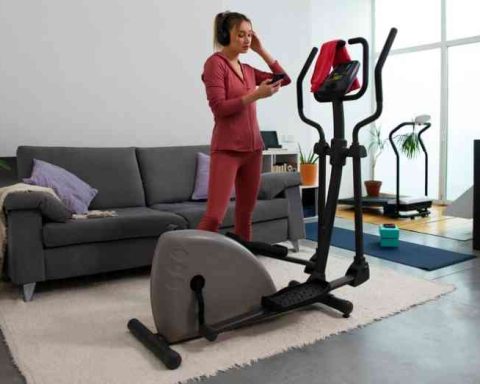Spinal Cord Injuries (SCIs) represent some of the most challenging medical conditions to manage and overcome. The journey to recovery and adaptation involves not just the person injured but an entire ecosystem of care, from medical professionals to technological innovators. It’s a path marked by small victories and significant breakthroughs, each step forward fueled by the promise of innovation. Today, we delve into five groundbreaking advancements that are reshaping the landscape of SCI rehabilitation, offering new hope and opening doors to possibilities once deemed unreachable.
The Rise of Robotic Exoskeletons
Imagine the fusion of human will and robotic precision, a synergy where each step forward is a testament to human ingenuity. Robotic exoskeletons are not just devices; they are beacons of hope for those navigating the aftermath of spinal cord injuries. These wearable machines empower individuals, granting them the ability to stand, walk, and even climb steps. The psychological and physical benefits are immense, from reducing dependency on caregivers to improving cardiovascular health.
Stories of individuals taking their first steps after years of immobility highlight not just the technological achievement but the profound human spirit driving every innovation. The integration of these exoskeletons into daily rehabilitation programs marks a significant leap forward in SCI care, offering a more dynamic and interactive recovery process. Researchers continue to refine this technology, making it lighter, more intuitive, and accessible to a broader range of patients. This ongoing innovation underscores the relentless pursuit of freedom and autonomy for SCI individuals.
The Frontier of Neural Interfaces
Neural interfaces and Brain-Computer Interfaces (BCIs) sound like the stuff of science fiction, but they’re increasingly becoming science facts. By bridging the gap between the brain and external devices, BCIs can translate thought into action, enabling control over computers, prosthetics, or even regaining movement in paralyzed limbs. The potential is staggering, offering a new form of communication and interaction with the world for those with SCIs. Advances in this field are rapid, with research exploring how to enhance the sensitivity and specificity of these interfaces, making them more intuitive and effective for users. As these technologies evolve, they pave the way for more personalized and precise rehabilitation strategies, tailored to the unique neural pathways of each individual. Ethical considerations and user safety remain at the forefront of BCI development, ensuring that these groundbreaking tools enhance, rather than compromise, the quality of life. The dialogue between technology and biology heralds a future where limitations are redefined, and independence is reclaimed.
Regenerative Medicine: The Promise of Renewal
Regenerative medicine stands at the forefront of transforming the body’s ability to heal and renew. Through stem cell therapy, scientists are exploring ways to repair damaged nerves and tissues, offering a glimmer of hope for functional recovery. The journey is fraught with challenges, but the potential rewards are monumental, promising a future where the effects of spinal cord injuries can be significantly mitigated if not entirely reversed. Clinical trials and research are pivotal in this quest, each breakthrough bringing us a step closer to realizing the full potential of regenerative therapies. The interdisciplinary nature of this field brings together experts in biology, engineering, and medicine, fostering a collaborative environment ripe for innovation. Patient involvement and feedback play a crucial role in shaping the direction of regenerative treatments, ensuring they meet the real-world needs of those they aim to serve. This patient-centered approach not only accelerates the development of effective therapies but also empowers individuals with SCI to play an active role in their recovery journey.
Medical Marijuana: A Controversial Companion
The use of medical marijuana in managing SCI symptoms, such as chronic pain and muscle spasms, has been a subject of much debate and study. While the legal landscape varies across states, the therapeutic potential of cannabis in providing relief from SCI-related discomfort is undeniable. However, navigating the intricacies of medical versus recreational use requires a nuanced understanding of the law and its implications on treatment options. With an increasing number of states recognizing the medicinal value of cannabis, patients and healthcare providers are equipped with an alternative that can be tailored to address specific symptoms. The personalized approach to cannabis-based therapy signifies a shift towards more compassionate and customized care, recognizing the unique experiences and needs of each individual with SCI. As research continues to unveil the multifaceted benefits of medical marijuana, its role in SCI rehabilitation is poised to expand, offering a natural complement to traditional treatments.
For residents of Ohio, for example, where medical marijuana is a critical component of their rehabilitation regimen, keeping their medical marijuana card active is crucial. The process to renew an Ohio medical marijuana card online is straightforward, yet it underscores the importance of maintaining legal access to prescribed treatments. This step is essential, especially for those who have found solace and relief in cannabis-derived products, tailored to manage their specific symptoms effectively. Navigating the renewal process online not only ensures continuous access but also highlights the advancements in healthcare accessibility and patient autonomy. By simplifying this process, Ohio sets an example for other states to follow, ensuring that patients can easily maintain their access to necessary treatments. This practical aspect of medical marijuana use emphasizes the evolving relationship between healthcare, technology, and law, aiming to support patients in their journey toward wellness.
In Ohio, the full legalization of marijuana does not diminish the value of a medical marijuana card. The card offers access to strains and products designed with medical users in mind, potentially at lower costs and with legal protections that recreational users do not enjoy. It’s a reminder of the medical community’s endorsement of cannabis as a viable part of the therapeutic toolkit for SCI rehabilitation. Moreover, the medical marijuana card serves as a bridge, connecting patients with healthcare professionals who can guide their treatment, ensuring the most beneficial and effective use of cannabis. This relationship fosters a deeper understanding of the patient’s condition and a more targeted approach to symptom management. Despite the broader acceptance of marijuana, the medical program maintains its significance, offering a structured, supported pathway for those seeking relief from the complexities of spinal cord injury symptoms.
Immersive Recovery: VR and AR in Therapy
Virtual Reality (VR) and Augmented Reality (AR) are reshaping the rehabilitation process, offering immersive experiences that extend beyond physical limitations. Through simulated environments, patients can engage in therapy that’s not just about physical recovery but cognitive and emotional rehabilitation. These technologies offer a controlled yet flexible platform for practicing real-life skills, enhancing motivation, and tracking progress in ways previously unimaginable. The engagement and feedback provided by VR and AR technologies are invaluable, making rehabilitation an interactive journey of discovery and improvement. This approach not only aids in the recovery of physical abilities but also addresses the psychological challenges that accompany SCI, providing a holistic path to wellness. The potential for customization and adaptation in VR and AR applications means that each patient’s experience can be uniquely tailored to their rehabilitation goals and preferences. As these technologies become more widespread, their impact on reducing rehabilitation time and improving outcomes continues to grow, illustrating the profound effect of immersive therapy on the road to recovery.
Conclusion
The landscape of spinal cord injury rehabilitation is one of constant evolution, driven by the relentless pursuit of innovation and a deeper understanding of the human body’s capabilities. From the empowering technology of robotic exoskeletons to the frontier science of neural interfaces, regenerative medicine, immersive VR/AR therapies, and the nuanced role of medical marijuana, each innovation offers a piece of the puzzle in overcoming the challenges posed by SCIs. These advancements are not just technological feats; they are lifelines for those affected, offering new pathways to recovery, independence, and hope. As we look to the future, the potential for even greater breakthroughs remains boundless, fueled by the synergy of human resilience and the unyielding quest for improvement. The journey of SCI rehabilitation is marked by innovation, compassion, and the collective effort to uplift and empower every individual on their path to recovery.






